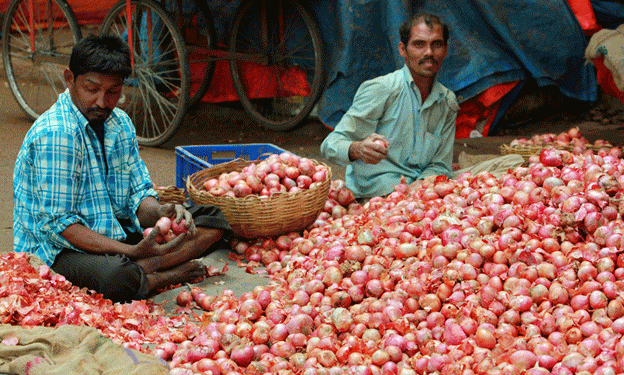This season has seen a significant expansion in onion cultivation in Nashik, Maharashtra, known as India’s onion belt. Farmers have increased the area under Kharif onion production to 30,000 hectares, nearly double the 16,000 hectares from last year. As a result, the district is set to produce 6 lakh metric tons of onions, a considerable jump from last year’s 3.2 lakh metric tons. This expansion is largely attributed to favorable weather conditions and better monsoon rainfall, offering a reprieve from the suboptimal rainfall last year, which impacted yields.
Kharif onions are expected to enter the market starting mid-October. Despite this surge in production, Kharif onions typically have a shorter shelf life of less than a month, compared to summer onions, which can last up to six or seven months. This shorter storage period compels farmers to sell their produce quickly, potentially causing a drop in prices. Currently, wholesale prices are hovering around ₹4,700 per quintal, but they are projected to fall to as low as ₹2,000 per quintal once the new harvest arrives(
Farmers currently selling their summer onions will likely face intensified competition as the Kharif harvest approaches. Market dynamics could shift rapidly, leading to a potential reduction in retail onion prices, which are presently between ₹60 and ₹70 per kilogram. As a result, farm owners and agricultural engineers need to strategize around quick market entry to avoid losses associated with Kharif onions’ rapid perishability.
Furthermore, there are calls from the Maharashtra Onion Growers’ Association to reduce export tariffs, which currently stand at 20%. These tariffs limit export opportunities, preventing farmers from capitalizing on international markets. Removing these restrictions could alleviate downward pressure on domestic prices by diversifying selling opportunities for Indian onion producers.
The upcoming Kharif season presents both opportunities and challenges for farmers in Nashik. With bumper yields on the horizon, farmers must prepare for a swift market entry and ensure timely sales to avoid spoilage. The potential price drops may hurt short-term profits, but efficient market strategies and potential export relief could offset these impacts. The next few months will be critical for farmers, agronomists, and policymakers to navigate the rapidly changing onion market landscape.































